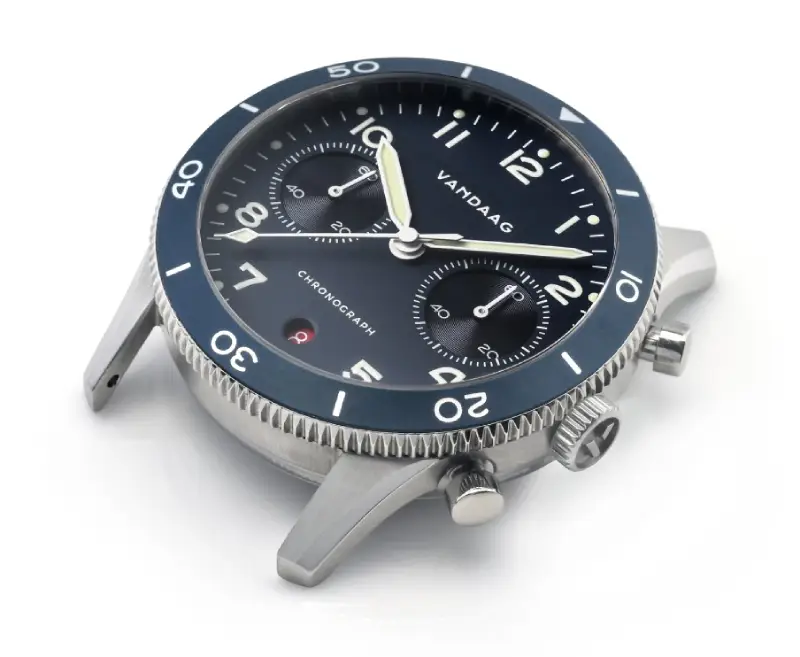Watch bezels and their function

The rotating bezel of the diver watch
The rotating bezel is most often used in diving watches. Here, the rotating bezel can only be turned counterclockwise on one side. Before diving, the diver turns the zero marker to the position of the minute hand.
That the bezel is unidirectional counterclockwise rotatable has a benefit: If the diver accidentally bumps it, the dive time is seemingly increased and the diver is on the safe side. Especially when considering decompression phases, this is vital.
(Ideally, the rotating bezel can be adjusted with a gloved grip. It has a luminous dot for reading underwater and a continuous minute division. On some professional diving watches, the minute scale is on the inner rim of the dial. This rotating ring can then be adjusted via a crown).
How does the rotating bezel work?
With a diving bezel, you place the triangle on the minute hand before the dive. Basically, the rotating bezel functions as a stopwatch. By looking at the hand position and the bezel, the diver can see the elapsed dive time. He can thus properly plan the decompression phases.
The bezel of pilot watches
Pilot's watches are a type of watch where the bezel also has an important function. The bezel may and should be able to be turned in both directions here. Pilots who fly according to visual flight rules in particular can use the additional minute scale as a navigation aid:
How does the rotating bezel work?
The zero point is set to the minute hand at takeoff, so the bezel counts the minutes of flight. For example, if the pilot needs to change direction on the planned route at certain landmarks after 13 minutes, he can use the bezel to keep track of time and look for the highway interchange or church steeple.
The rotating bezel for converting units
However, the bezel on pilot watches can play another role. For example, pilots are interested in the conversion of kilometers to nautical miles: With the bezel, he can set the outer number ring the fixed miles on the left side of the dial. At twelve o'clock, he can then read off the kilometers on the rotating bezel.
The bezel can also be used as a slide rule. If the bezel then has a logarithmic scale, even multiplication and division is possible, for example, when converting units or money exchange rates. The bezel is simply shifted relative to the fixed part, thus triggering the calculation process: addition becomes multiplication, subtraction becomes division. This is done with the help of the rule of three and the correct conversion formula. For example, if the euro is worth 1.2 times the US dollar, you set the 12 to the inner 10 with the outer ring and can now get all prices converted around the dial).